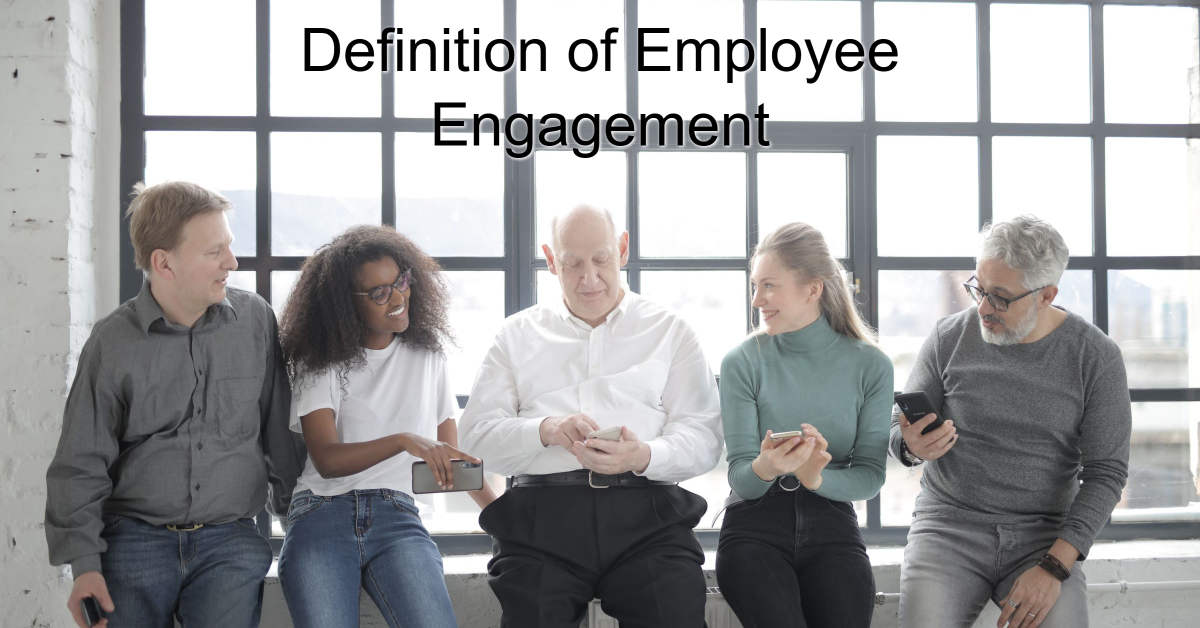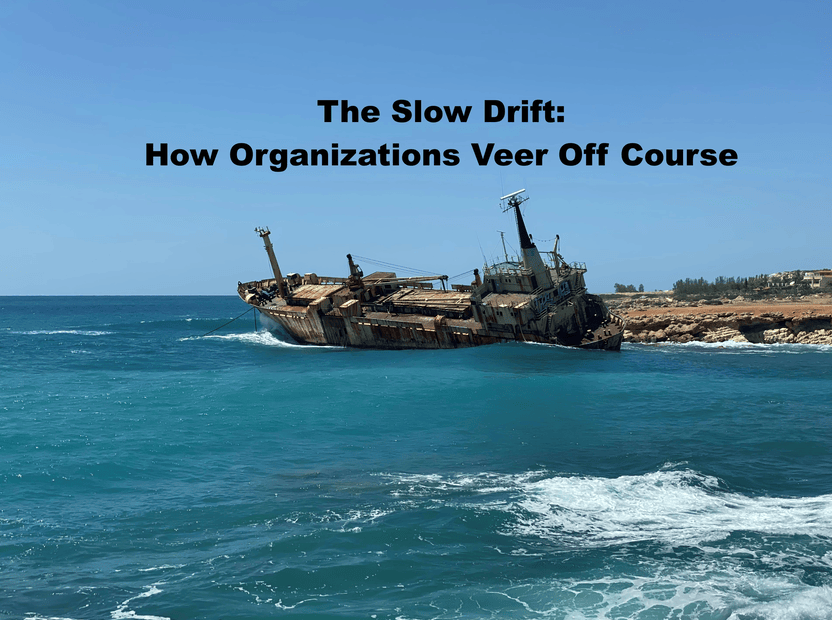When we talk about employee engagement definition, we find that it can be a little nuanced: Employee engagement implies something is put in gear, is switched on or, perhaps, even fully involved. It includes the ideas of allure, allegiance and action. Its polar opposite is indifference.
It has only been in the last forty years that researchers have begun to study the relationship between the attitudes, well-being, and job satisfaction of employees and the business bottom line. The term employee engagement emerged in the 1990’s with the goal of identifying those key areas for managers to “maximize the return on human capital,” or, in other words, to motivate employees and improve performance and service.
Employee engagement strategies have been proven to reduce staff turnover, improve productivity and efficiency, retain customers at a higher rate, and make more profits.
Ashleigh Bluemthal, Engagement Muiltiplier,2018
Employee Engagement Definition
Engagement…
- a combination of dedication, motivation, and sense of belonging
- is described as “one step up” from commitment
- has its very foundation in relationship
- takes two parties working together—it calls for a two-way relationship between employer and employee
ADP Research explains further:
Employee Engagement simply put is the emotional precursor to performance. The purpose of an employee engagement metric is not to actually measure engagement. Instead, its purpose is to help a team create more productive behaviors; behaviors such as lower turnover, fewer accidents, higher productivity, and higher customer satisfaction. We now know that the best predictors of these productive behaviors are the percentage of team members who can report strongly agree to the items in our engagement metric.
ADO, 2020
Characteristics of Engaged Employees
- are enthusiastic and energetic—they go the extra mile;
- care about what they do and have a sense of purpose in their work;
- have positive attitudes towards the organization and its values;
- feel valued for their contributions.
In highly engaged organizations, leaders are more visible and have a high level of personal engagement. They have a clear employee engagement definition and act as role models by demonstrating organizational values and they build relationships at all levels. As a result, employees feel informed, valued, and respected and come to share their leaders’ passion and commitment to success.
Working hard for something we don’t care about is called stress; working hard for something we love is called passion.
Simon Sinek
Benefits of Employee Engagement
Numerous studies have well established the significant relationship between employee engagement and productivity, profitability, and customer satisfaction.
Work groups in the top quartile of engagement are more productive; they average 17% higher productivity, and 21% higher profitability.
Gallup, 2020
Work groups with higher levels of engagement achieve 10% higher customer scores and a 20% increase in sales than those on the lower end.
ADP Research, 2020
Employees who say they are part of a team, are twice as likely to be fully engaged at work.
Marcus Buckingham 2020
We would all like to have the most engaged person in the world working on our team. How do we get more engaged people on our team? The answer is, you already have people like that. You just need to help them express what motivates them and step into that.
Ashley Goodall- Senior VP of Leadership and Team Intelligence, Cisco Systems
The Cost of Employee Disengagement
Of course the flip side of this is that employee disengagement is extremely costly. It seeps into the work atmosphere, infects the workforce, and affects every part of the organization. The results include increased absenteeism, negativity, and internal conflict. When this happens, the workplace is not a happy place to be.
Actively disengaged employees cost the U.S. $483 billion to $605 billion each year in lost productivity.
Gallup, 2020
The attitude and actions of employees can make or break client (internal and external) relationships. The actual cost of a dissatisfied client is not just one transaction or interaction but the loss of the “trust and confidence” of that client. Delivering poor quality services, missing deadlines, or sending the wrong product are all issues which can be readily linked to a disengaged employee. The impact of lost or diminished business can often be substantial, even to the point of threatening the survival of the company.
How many people can one disengaged employee affect? Imagine just 5-10 customers, colleagues, or acquaintances hearing repeatedly that XYZ Company is a bad place to work. Not only can this negative buzz hamper immediate productivity, it can also damage the reputation of the company’s brand in the marketplace and affect the company’s ability to attract quality employees in the future.
The hidden costs of disengagement: “Health care expenditures at high-pressure companies are nearly 50 percent greater than at other organizations.”
Kim Cameron, Emma Seppala, Harvard Business Review 2020
The financial cost of employee turnover has actual and hidden costs: the time required to recruit and train new employees and the potential loss of service during the vacancy period. In addition, it is costly for it a company to identify the disengaged employee, understand the reasons for the disengagement, and implement the actions required to improve the situation.
A Story of Employee Engagement
I did not think I could get any more annoyed. I had been on HOLD for ten minutes listening to the soothing notes of Kenny G and assurances that, “Your call is very important to us.” Then, suddenly, the line went dead! I had to start all over again. Another ten minutes went by before my call was answered by a real, live person.
After hearing my request, the customer service agent informed me that I had dialed the wrong department. This information was said with a “you should have known better” attitude. Sensing my frustration, he said he would be happy to connect me to the right department. I waited another five minutes before Lucinda took my call.
Lucinda was the polar opposite of the previous agent. She was sympathetic, friendly, and very helpful! She solved my problem in a matter of minutes. When she said, “I’m sorry this must be so frustrating for you,” it sounded like she really meant it.
At the close of the conversation, Lucinda asked me if I needed anything else. I wondered, “Yes, I have one more question. Are you like this every day?” Her answer did not surprise me. She said, “Actually, I am.” “Why?” I inquired. She stated simply, “I love my job.” That is the crux of it, is it not? Employees who are engaged at work are motivated, enthusiastic, and highly committed. They love their job. Lucinda was the definition of employee engagement.
The Truth About Employee Engagement
Let’s get real for a moment—there are no perfect workplaces. In large part, because there are no perfect people (sorry, Mom, but it is true)! Not only that, but organizations are facing less than ideal conditions: the global economic crisis, cutbacks, lay-offs, fiscal uncertainty…
From another angle, the “yeah, but”-ers in our midst will raise valid issues that warrant consideration. There are numerous “what if” and “what about” scenarios. For instance, in a climate of budget constraint, “What if your organization simply does not have the wherewithal to provide the resources necessary to promote employee competence?” Or, “What about the “squeaky wheel” (every organization seems to have at least one…)? Part of the process of applying, of working out how employee engagement will evolve in your organization involves addressing those very concerns.
A commitment to creating a culture of engagement will require change. It is an on-going process. Let me repeat that: It is an on-going process! As Dick Tracy might mutter, “It ain‟t gonna happen overnight, kid.” Furthermore, it is a process that is never fully finished. It is a long-term endeavor.
An open discussion comparing the answers of individuals throughout the organization is an excellent way to start. Robinson et al. (2004) claim: The strongest driver of all is a sense of feeling valued and involved.
Questions for Strengthening Employee Engagement
Describe a time when you felt highly engaged in your job?
What impact did that have on your over-all life satisfaction and sense of well-being?
Conversely, describe a time when you felt highly disengaged in your job?
What impact did that have on your over-all life satisfaction and sense of well-being?
In your current place of employment, can you think of an example of an employee who is highly engaged? What impact does this employee’s engagement have on the workplace?
In your current place of employment, can you think of an example of an employee who is highly disengaged? What impact does this employee’s disengagement have on the workplace?
Do you have an effective employee engagement definition and target, and a strategy to grow in this area?





